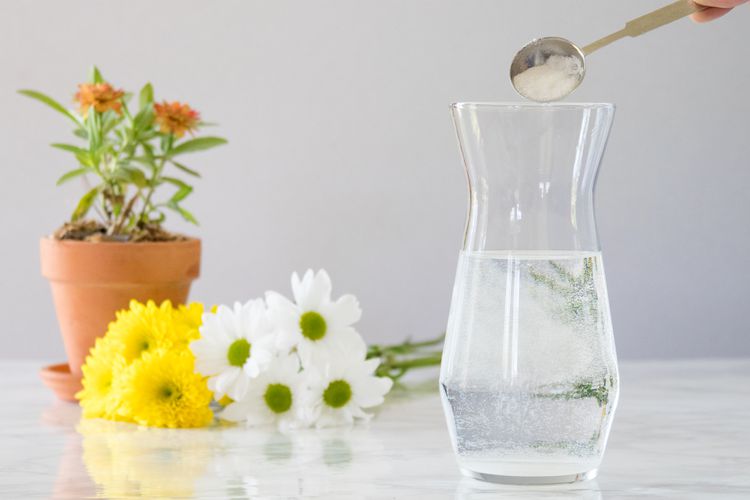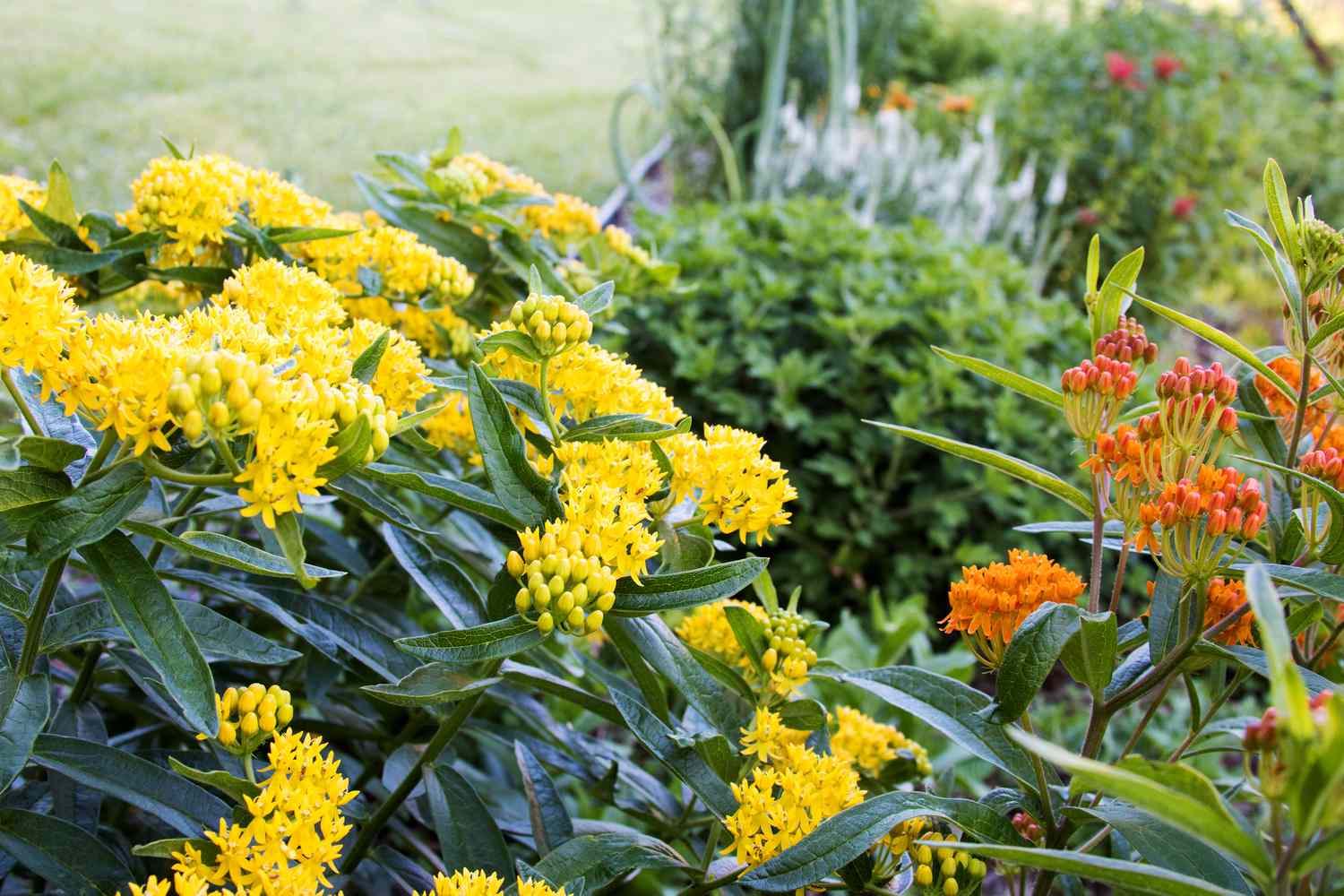Contents

Using sugar water for your plants is a widely shared gardening tip that you might see on social media platforms. Proponents suggest that sugar water enhances photosynthesis and aids plants in recovering from transplant shock. However, is there any truth to the benefits of sugar water for plants, or is it merely a myth that could potentially cause harm?
Plants not only synthesize their own sugars as glucose, but introducing sugar water can hinder their ability to take in water. Continue reading to discover the impact of sugar water on plants.
What exactly is sugar water?
Sugar water is a mixture of water from the tap and sugar, intended for use as a nutrient for plants. Typically, the sugar is mixed with hot or boiling water to ensure it dissolves thoroughly. The proportions of sugar to water can differ based on the specific recipe.
The Concept of Sugary Water
During photosynthesis, plants harness energy, water, and carbon dioxide to create sugars and starches. The concept of supplying plants with sugar water stems from the belief that the sugar offers extra carbohydrates that the roots can absorb. The underlying theory suggests that this sugar can enhance the growth of the plant.
There are multiple reasons why using sugar water as a nutrient for plants is ineffective.
The Detrimental Effects of Sugar Water on Plants
Plants lack a digestive system that processes sugar in the same way humans do. Additionally, the sugar they generate is glucose, a simple sugar, while the sugar we buy in stores is composed of polysaccharides, which are more complex sugars made up of chains of monosaccharides that are not easily digested.
Plant roots are incapable of absorbing sugar, and introducing sugar dissolved in water can actually hinder their ability to take in water. Without sufficient water, a plant will wilt and ultimately perish.
Plants perform photosynthesis independently, regulating their sugar production to support growth. The sugar requirements fluctuate based on their developmental stage; for instance, a plant moving from the seedling phase to maturity generally requires a higher sugar intake than a fully grown plant. Additional sugar does not enhance this natural process.
Additionally, soil that is soaked with a sugar solution may draw in detrimental microorganisms that can impact the well-being of the plant.
There is no scientific proof that providing plants with sugar water benefits their health. In fact, it may be detrimental and could potentially lead to their demise.
Avoid Using Sugar Water for Transplant Shock
The negative impact of sugar water mentioned earlier is also relevant when attempting to help plants that are experiencing transplant shock. When plants appear droopy and unhealthy after being moved, it is typically due to one of two factors. First, their leaves may have suffered from excessive sun exposure too soon, often due to inadequate hardening off, which inhibits their ability to photosynthesize. Alternatively, the roots may have been harmed during the transplanting process, preventing the plants from absorbing enough water and nutrients.
Sugar water is ineffective in aiding plants experiencing transplant shock and may even exacerbate the situation. Typically, plants can bounce back on their own. It’s important to be patient, ensure they receive adequate water, and shield them from excessive sunlight to avoid further leaf damage.
Utilize sugar water exclusively for fresh-cut blooms.
The sole situation in which sugar water is beneficial is when it’s used in a vase for cut flowers to help them stay fresh. This is why florists typically include a small packet of sugar-based plant nourishment for you to mix in with the water.
In contrast to plant roots, the stems of cut flowers are capable of taking in sugar, which replenishes their carbohydrate levels. The sugar creates a misleading indication that the plant is thriving, prompting the flowers to keep blooming. However, this effect is only short-lived, and ultimately, the flowers will wither.

Alternatives to Sugar Water for Plant Nutrition
Ensure that your plants receive adequate sunlight and water to facilitate photosynthesis. To supply essential nutrients, choose an appropriate fertilizer—whether it’s a general-purpose option, one that is rich in nitrogen to enhance leaf development, or one that has a higher phosphorus concentration to support flowering. Always adhere to the recommended fertilizer guidelines, as using more than suggested can be counterproductive.

Utilizing Sugar Water to Draw in Pollinators
Research has explored the use of sugar-water solutions on plants to lure beneficial insects. The sugar acts similarly to artificial honeydew, successfully attracting various insects such as adult lacewings, ladybugs, adult weevil parasitoids, big-eyed bugs, minute pirate bugs, and adult hoverflies. However, this does not imply that applying sugar water to your plants is advisable. As a home gardener, a more effective and biodiversity-friendly approach is to cultivate native plants that naturally draw beneficial insects and pollinators. Allow these plants to generate their own sugar through photosynthesis, a process they can accomplish independently.

Is it possible to use sugar water to color plants?
For struggling plants, steer clear of sugar water. Instead, enhance the soil with nitrogen by opting for a fertilizer that has a higher nitrogen content. Sugar water does not contribute to the nitrogen levels in the soil.
What can I incorporate into water to promote the growth of my plants?
Incorporate a balanced, general-purpose fertilizer containing equal ratios of nitrogen, phosphorus, and potassium (NPK) to promote healthy plant growth.
Do plants enjoy sugar water?
Sugar water can be advantageous for cut flowers, but it should be avoided for potted plants or flowers in the garden. The sugar provides nutrients that cut flowers can no longer receive from the soil.


 Tips for Cultivating and Maintaining Haworthia Cooperi Plant
Tips for Cultivating and Maintaining Haworthia Cooperi Plant Tips for Cultivating and Maintaining Peperomia Orba (Peperomia Pixie Lime)
Tips for Cultivating and Maintaining Peperomia Orba (Peperomia Pixie Lime) Tips for Cultivating and Maintaining Calathea Orbifolia
Tips for Cultivating and Maintaining Calathea Orbifolia